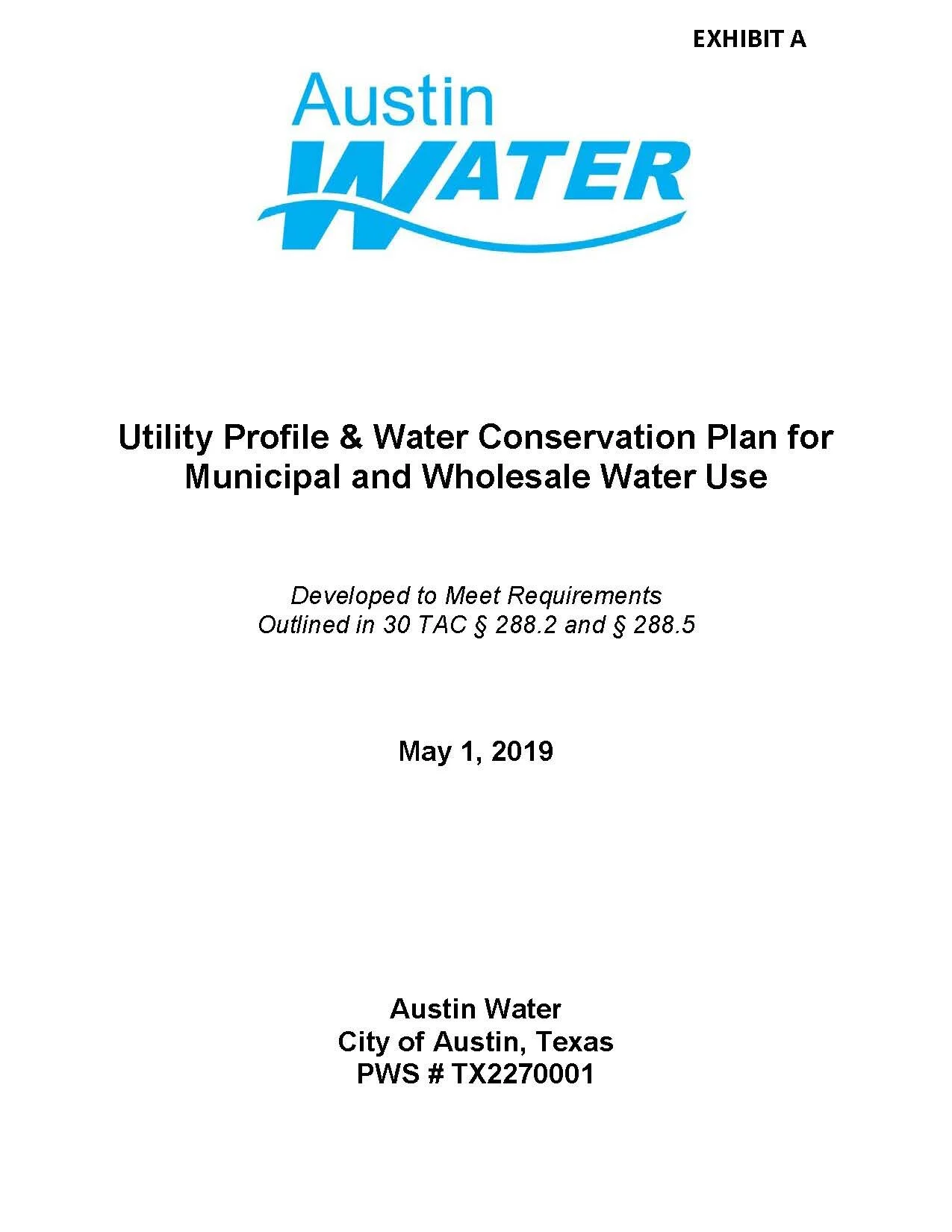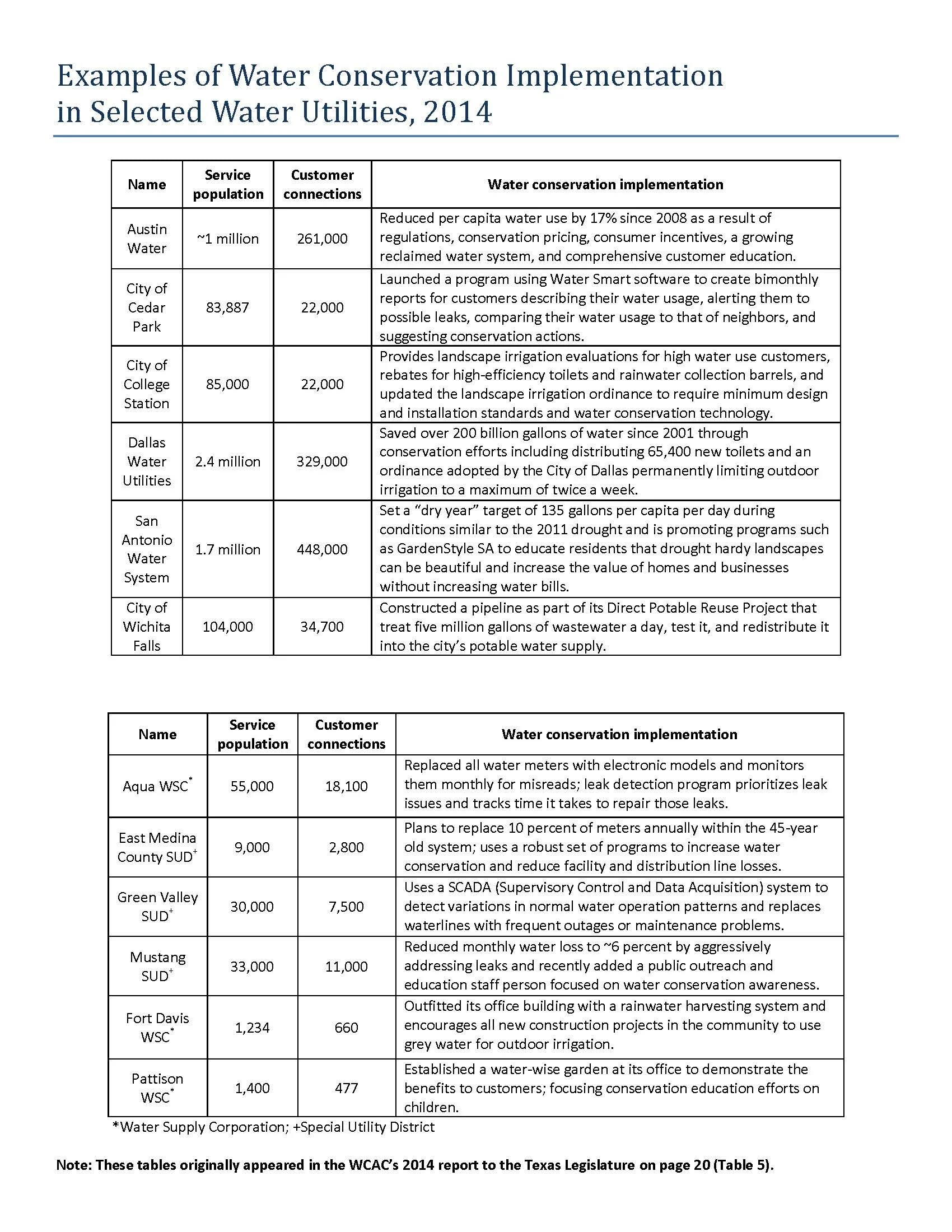This publication describes a proposed framework to assist communities in implementing the One Water approach in a way that optimizes water supplies to cities and keeps waters flowing for the creeks, rivers and bays that support healthy fish and wildlife and their habitats.
Read MoreThis brochure describes Texas's unique water issues and the various solutions being used to meet future water needs, including conservation, One Water, nature-based solutions, aquifer storage and recovery, reuse, groundwater withdrawal, desalination, interbasin transfers, and dams and reservoirs.
Read MoreThis report analyzes implementation of water conservation strategies in Texas water planning regions C, H, and K.
Read MoreThis one-pager provides examples of water conservation implementation in selected water utilities, including Austin Water, City of College Station, and Mustang SUD.
Read MoreThis guidance document has been prepared to meet the requirement and is provided to retail water providers and certain other water use sectors as a guide for preparation of water use reports, water conservation plans, and reports on water conservation efforts.
Read MoreThis report presents the results of a study to identify and evaluate potential methods to assist the Texas Water Development Board and individual municipal water providers in evaluating the actual water savings being achieved by municipal water conservation efforts.
Read MoreSeveral best management practices (BMPs) have been implemented through Water Quality Management Plans (WQMPs) in the West Fork Watershed of Trinity River Basin in Texas, USA, where nonpoint source pollution is a serious concern. Major sources of pollution are sediment erosion and nutrients. The objective of this study was to evaluate the long-term impact of implementation of WQMPs on nonpoint source pollution at the farm level and watershed level using a modeling approach. The Soil and Water Assessment Tool watershed model was applied to quantify the impacts of implementing WQMPs on sediment and nutrients. A pre- BMP scenario representing conditions of the watershed prior to the implementation of WQMPs, and a post-BMP scenario representing the conditions of the watershed after implementation of WQMPs were simulated to estimate the reductions in nonpoint source pollution due to WQMP implementation. The results are presented as percentage reductions in sediment and nutrient loadings, at the farm level and at two locations within the watershed. The results revealed that (a) the benefits of the WQMPs were greater (up to 99%) at the farm level and (b) the benefits due to WQMPs were 1e2% at the watershed level. Watershed level benefits are tangible as the WQMP implementation area is very small compared to the watershed area. An additional scenario was evaluated to show the possible impacts of expanding the current BMP effort on load reductions. This study showed that a modeling approach can be used to estimate the impacts of water quality management programs in large watersheds.
Read More















